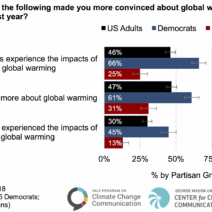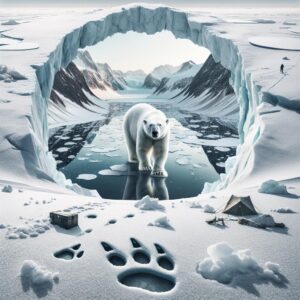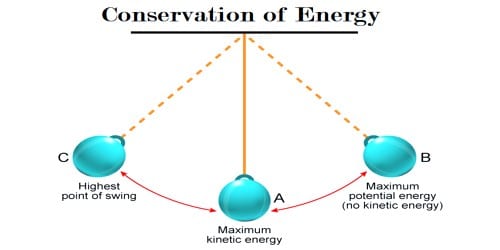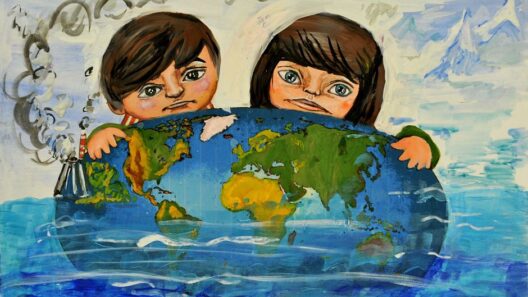Polar bears and penguins are emblematic of the frigid landscapes and marine environments that many people cherish. These species, with their unique adaptations and behaviors, have captured the imagination of countless individuals. However, their existence is increasingly jeopardized by the advance of global warming. The focus on these two icons—a bear endemic to the Arctic and a bird synonymous with the Antarctic—provides a stark illustration of climate change’s influence on biodiversity. Despite their geographical separation, the plight of polar bears and penguins converges, reflecting broader environmental transformations affecting our planet.
To begin, it is imperative to understand the ecological niches occupied by polar bears and penguins. Polar bears (Ursus maritimus) are apex predators in their Arctic realm, relying on sea ice as a platform for hunting seals, their primary prey. As climate change warms the Arctic at an alarming rate, this critical habitat is shrinking. The loss of sea ice not only threatens polar bear hunting grounds but also disrupts the entire marine ecosystem. Without sufficient ice, the stability and availability of prey species are compromised, leading to a cascading effect throughout the food web.
In contrast, penguins, particularly species like the Emperor and Adélie penguins, inhabit the frigid waters of the Southern Hemisphere. These birds are exquisitely adapted to their environment, relying on sea ice and cold ocean waters for foraging and breeding. In recent years, rising ocean temperatures have led to a decrease in krill populations, a fundamental component of the Antarctic food web. As krill abundance declines, so too does the food supply for penguins and other marine animals that rely on them.
This juxtaposition of polar bears and penguins serves as a microcosm of the global effects of climate change. While geographically distinct, the challenges facing each species highlight a shared vulnerability. The melting ice of the Arctic spells doom for polar bears, just as the diminishing sea ice in Antarctica jeopardizes the success of penguin colonies. Both phenomena are exacerbated by alterations in temperature and precipitation patterns, which directly affect breeding cycles, migratory behavior, and food availability.
Furthermore, the fascination with polar bears and penguins often stems from their representations in popular culture and their roles as symbols of pristine wilderness. This connection can lead to a form of cognitive dissonance. People adore these remarkable creatures yet often remain oblivious to the environmental degradation threatening their existence. Such a disconnect illustrates a larger societal challenge: the tendency to romanticize the natural world while remaining passive in the face of impending disaster.
Moreover, the plight of these species necessitates broader discussions about the human impact on climate change. Industrialization, deforestation, and fossil fuel consumption have dramatically accelerated the pace of global warming. The ramifications are multifaceted and complex, impacting not only polar habitats but also influencing weather patterns worldwide, acidifying oceans, and contributing to rising sea levels. As climate change persists, the integral connections between species and their environments become increasingly tenuous.
Adapting to climate change is not merely an ecological necessity; it is an ethical imperative. The survival of polar bears and penguins depends not just on the preservation of their immediate habitats but also on global initiatives to mitigate climate change. Conservation efforts must include robust policy measures aimed at reducing greenhouse gas emissions, protecting critical habitats, and fostering sustainable practices in industries that impact climate health.
Additionally, education plays a pivotal role. By raising awareness about the challenges that polar bears and penguins face, individuals can better appreciate the intricate web of life in which these species are enmeshed. Citizen science projects and conservation campaigns can empower communities to take action, whether by reducing their carbon footprint or participating in habitat restoration efforts. In this sense, the iconic nature of polar bears and penguins can serve as a catalyst for broader environmental stewardship.
Furthermore, striking a balance between conservation and human interests is crucial. Indigenous communities in polar regions offer invaluable knowledge about sustainable living, fostered through centuries of connection to the land and sea. Incorporating traditional ecological knowledge into modern conservation strategies can yield insights that facilitate the coexistence of human activities and wildlife preservation. It underscores a significant point: protecting iconic species means protecting the cultural identities intertwined with their existence.
In conclusion, the plight of polar bears and penguins against the backdrop of global warming is a poignant reminder of the interconnectedness of all life forms on Earth. Their shared fate provokes reflection on the choices humanity must make to safeguard biodiversity and ensure a sustainable future. Protecting these species requires a multifaceted approach, blending conservation, education, and ethical considerations. As stewards of the planet, we bear the responsibility to champion the cause of iconic species, recognizing that their survival is intrinsically linked to our collective action in combating climate change.
The preservation of polar bears and penguins is not just a matter of ecological concern; it embodies a moral obligation to promote a harmonious relationship with nature. Without decisive action, the world may one day face the sobering reality of a future devoid of these remarkable animals—an outcome that would reverberate far beyond the icy expanses they inhabit.






